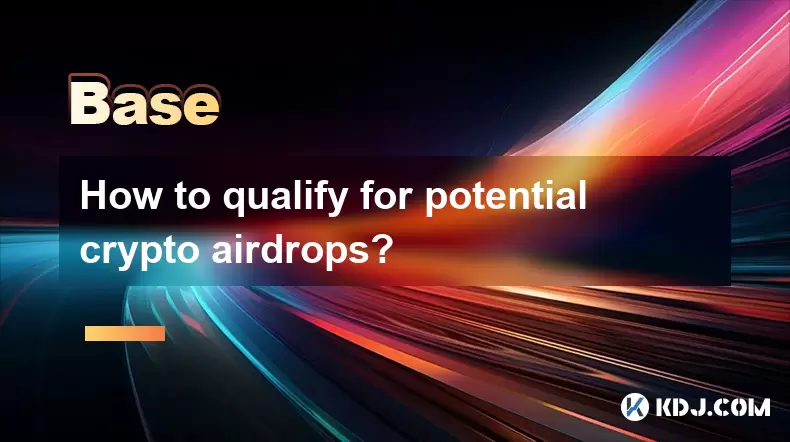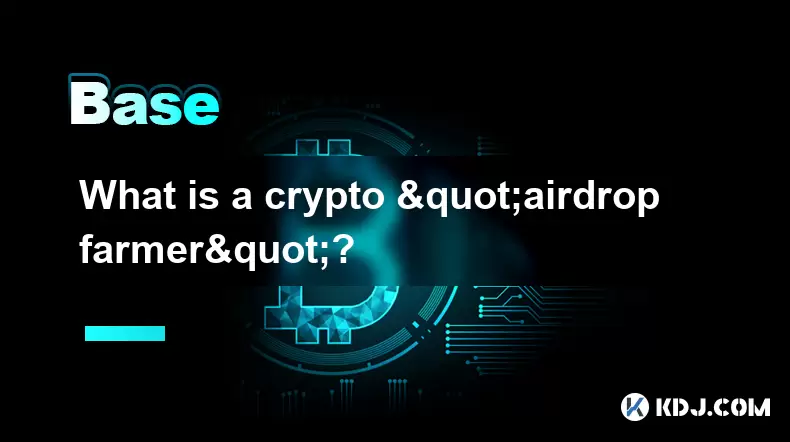-
 Bitcoin
Bitcoin $118000
0.67% -
 Ethereum
Ethereum $3750
0.71% -
 XRP
XRP $3.183
1.61% -
 Tether USDt
Tether USDt $1.000
-0.01% -
 BNB
BNB $788.1
1.21% -
 Solana
Solana $186.0
0.85% -
 USDC
USDC $0.9999
-0.02% -
 Dogecoin
Dogecoin $0.2373
1.25% -
 TRON
TRON $0.3204
1.76% -
 Cardano
Cardano $0.8266
1.85% -
 Hyperliquid
Hyperliquid $44.04
1.28% -
 Sui
Sui $4.192
5.88% -
 Stellar
Stellar $0.4399
2.63% -
 Chainlink
Chainlink $18.40
1.19% -
 Hedera
Hedera $0.2842
9.06% -
 Bitcoin Cash
Bitcoin Cash $560.5
2.46% -
 Avalanche
Avalanche $24.99
4.58% -
 Litecoin
Litecoin $114.5
1.25% -
 UNUS SED LEO
UNUS SED LEO $8.980
-0.03% -
 Shiba Inu
Shiba Inu $0.00001406
0.53% -
 Toncoin
Toncoin $3.306
4.27% -
 Ethena USDe
Ethena USDe $1.001
0.03% -
 Polkadot
Polkadot $4.169
2.37% -
 Uniswap
Uniswap $10.56
1.95% -
 Monero
Monero $322.8
1.06% -
 Dai
Dai $0.0000
0.00% -
 Bitget Token
Bitget Token $4.545
0.12% -
 Pepe
Pepe $0.00001261
1.29% -
 Aave
Aave $296.5
1.27% -
 Cronos
Cronos $0.1379
5.90%
What are PoW and PoS consensus mechanisms and how are they different?
PoW secures Bitcoin via energy-intensive mining, while PoS, used in Ethereum 2.0, is more eco-friendly, relying on validators' staked coins for security.
Apr 14, 2025 at 03:14 am

Proof of Work (PoW) and Proof of Stake (PoS) are two of the most prominent consensus mechanisms used in blockchain networks to achieve agreement on the state of the ledger. These mechanisms are crucial for maintaining the integrity and security of decentralized systems. In this article, we will delve into the details of PoW and PoS, explaining their functionalities, differences, and implications within the cryptocurrency ecosystem.
Understanding Proof of Work (PoW)
Proof of Work (PoW) is the original consensus mechanism used by Bitcoin and many other cryptocurrencies. It is designed to secure the network and validate transactions through a process known as mining.
In PoW, miners compete to solve complex mathematical puzzles. The first miner to solve the puzzle gets the right to add a new block of transactions to the blockchain and is rewarded with newly minted cryptocurrency and transaction fees. This process, known as mining, requires significant computational power and energy.
The security of PoW relies on the difficulty of these puzzles, which adjusts periodically to maintain a consistent block time. The idea is that it would be prohibitively expensive for a malicious actor to control more than half of the network's computational power, a scenario known as a 51% attack.
Understanding Proof of Stake (PoS)
Proof of Stake (PoS) is an alternative consensus mechanism that aims to address some of the limitations of PoW, particularly its high energy consumption. In PoS, validators are chosen to create new blocks based on the number of coins they hold and are willing to "stake" as collateral.
Instead of solving puzzles, validators in a PoS system are selected to forge new blocks based on their stake. This process is often referred to as minting or forging. The probability of being chosen to create a new block is proportional to the size of the stake.
The security of PoS is maintained through economic incentives. Validators have a financial interest in maintaining the integrity of the network because they risk losing their stake if they act maliciously. This mechanism is designed to prevent 51% attacks by making it economically unfeasible for a single entity to control the majority of the stake.
Key Differences Between PoW and PoS
Energy Consumption: One of the most significant differences between PoW and PoS is their energy consumption. PoW requires substantial computational power, leading to high energy use. In contrast, PoS is much more energy-efficient as it does not rely on solving complex puzzles.
Security Model: PoW's security is based on the difficulty of solving mathematical puzzles, while PoS relies on the economic incentives of validators. Both models aim to prevent malicious actors from controlling the network, but they achieve this through different means.
Decentralization: PoW is often criticized for leading to centralization due to the high costs of mining, which can result in a few large mining pools dominating the network. PoS, on the other hand, can potentially be more decentralized as it does not require specialized hardware, allowing more participants to become validators.
Reward Mechanism: In PoW, miners are rewarded with new coins and transaction fees for solving puzzles. In PoS, validators are rewarded with transaction fees and sometimes a small amount of new coins, depending on the specific implementation of the PoS system.
Implementation Examples
Bitcoin and PoW: Bitcoin is the most well-known implementation of PoW. Miners use powerful computers to solve SHA-256 puzzles, and the first to solve the puzzle adds a new block to the blockchain. This process has led to the development of specialized hardware known as ASICs (Application-Specific Integrated Circuits).
Ethereum and the Transition to PoS: Ethereum, initially using PoW, is transitioning to PoS with its Ethereum 2.0 upgrade. In Ethereum's PoS system, validators must lock up 32 ETH to participate in the validation process. The transition aims to reduce energy consumption and improve scalability.
Advantages and Disadvantages of PoW
Advantages of PoW:
- Proven Security: PoW has been successfully securing Bitcoin and other networks for over a decade.
- Decentralized Mining: While there are concerns about centralization, PoW allows anyone with the necessary hardware to participate in mining.
Disadvantages of PoW:
- High Energy Consumption: The energy required for mining is a significant environmental concern.
- Centralization Risks: The high costs of mining can lead to a few large mining pools controlling the majority of the network's hash power.
Advantages and Disadvantages of PoS
Advantages of PoS:
- Energy Efficiency: PoS is significantly more energy-efficient than PoW, making it more environmentally friendly.
- Lower Entry Barrier: PoS allows more participants to become validators without the need for expensive hardware.
Disadvantages of PoS:
- Nothing at Stake Problem: In some PoS systems, validators might be incentivized to support multiple blockchain forks, potentially leading to network instability.
- Wealth Concentration: PoS can lead to wealth concentration, as those with more coins have a higher chance of being chosen to validate blocks.
Frequently Asked Questions
Q: Can a blockchain switch from PoW to PoS?
A: Yes, a blockchain can transition from PoW to PoS. Ethereum is a prime example of this, as it is currently in the process of transitioning to PoS with its Ethereum 2.0 upgrade. This transition involves a series of steps, including the launch of the Beacon Chain and the eventual merging of the existing Ethereum network with the new PoS system.
Q: How does PoS address the 51% attack problem?
A: PoS addresses the 51% attack problem through economic incentives. In a PoS system, validators must stake their own coins to participate. If they attempt a 51% attack, they risk losing their entire stake, making such an attack economically unfeasible. This contrasts with PoW, where an attacker would need to control more than half of the network's computational power.
Q: Are there other consensus mechanisms besides PoW and PoS?
A: Yes, there are several other consensus mechanisms used in blockchain networks. Some examples include Delegated Proof of Stake (DPoS), Proof of Authority (PoA), and Proof of Capacity (PoC). Each of these mechanisms has its own unique approach to achieving consensus and securing the network.
Q: How does the choice of consensus mechanism affect the scalability of a blockchain?
A: The choice of consensus mechanism can significantly impact the scalability of a blockchain. PoW, due to its high computational requirements, can be less scalable than PoS. PoS, by not requiring energy-intensive mining, can potentially handle more transactions per second and scale more efficiently. However, the actual scalability also depends on other factors such as the network's architecture and implementation details.
Disclaimer:info@kdj.com
The information provided is not trading advice. kdj.com does not assume any responsibility for any investments made based on the information provided in this article. Cryptocurrencies are highly volatile and it is highly recommended that you invest with caution after thorough research!
If you believe that the content used on this website infringes your copyright, please contact us immediately (info@kdj.com) and we will delete it promptly.
- Tron ETF, Staking Rewards, and Institutional Capital: A New Era for TRX?
- 2025-07-27 12:50:13
- Bitcoin Reserves, Price, and Hyper Up: Riding the Crypto Wave to $1M?
- 2025-07-27 12:55:12
- Smart Money Moves: Wallet Withdrawal, SPX Accumulation, and What It All Means
- 2025-07-27 12:30:12
- Ethereum, Justin Sun, and Market Speculation: A Crypto Cocktail
- 2025-07-27 12:30:12
- Meme Coins in July 2025: Bitcoin Takes a Backseat?
- 2025-07-27 10:30:12
- HIFI Price Eyes Breakout: Downtrend Line in the Crosshairs?
- 2025-07-27 10:30:12
Related knowledge

What is the difference between CeFi and DeFi?
Jul 22,2025 at 12:28am
Understanding CeFi and DeFiIn the world of cryptocurrency, CeFi (Centralized Finance) and DeFi (Decentralized Finance) represent two distinct financia...

How to qualify for potential crypto airdrops?
Jul 23,2025 at 06:49am
Understanding What Crypto Airdrops AreCrypto airdrops refer to the distribution of free tokens or coins to a large number of wallet addresses, often u...

What is a crypto "airdrop farmer"?
Jul 24,2025 at 10:22pm
Understanding the Role of a Crypto 'Airdrop Farmer'A crypto 'airdrop farmer' refers to an individual who actively participates in cryptocurrency airdr...

What is the difference between a sidechain and a Layer 2?
Jul 20,2025 at 11:35pm
Understanding the Concept of SidechainsA sidechain is a separate blockchain that runs parallel to the main blockchain, typically the mainnet of a cryp...

What is the Inter-Blockchain Communication Protocol (IBC)?
Jul 19,2025 at 10:43am
Understanding the Inter-Blockchain Communication Protocol (IBC)The Inter-Blockchain Communication Protocol (IBC) is a cross-chain communication protoc...

How does sharding improve scalability?
Jul 20,2025 at 01:21am
Understanding Sharding in BlockchainSharding is a database partitioning technique that is increasingly being adopted in blockchain technology to enhan...

What is the difference between CeFi and DeFi?
Jul 22,2025 at 12:28am
Understanding CeFi and DeFiIn the world of cryptocurrency, CeFi (Centralized Finance) and DeFi (Decentralized Finance) represent two distinct financia...

How to qualify for potential crypto airdrops?
Jul 23,2025 at 06:49am
Understanding What Crypto Airdrops AreCrypto airdrops refer to the distribution of free tokens or coins to a large number of wallet addresses, often u...

What is a crypto "airdrop farmer"?
Jul 24,2025 at 10:22pm
Understanding the Role of a Crypto 'Airdrop Farmer'A crypto 'airdrop farmer' refers to an individual who actively participates in cryptocurrency airdr...

What is the difference between a sidechain and a Layer 2?
Jul 20,2025 at 11:35pm
Understanding the Concept of SidechainsA sidechain is a separate blockchain that runs parallel to the main blockchain, typically the mainnet of a cryp...

What is the Inter-Blockchain Communication Protocol (IBC)?
Jul 19,2025 at 10:43am
Understanding the Inter-Blockchain Communication Protocol (IBC)The Inter-Blockchain Communication Protocol (IBC) is a cross-chain communication protoc...

How does sharding improve scalability?
Jul 20,2025 at 01:21am
Understanding Sharding in BlockchainSharding is a database partitioning technique that is increasingly being adopted in blockchain technology to enhan...
See all articles

























































































